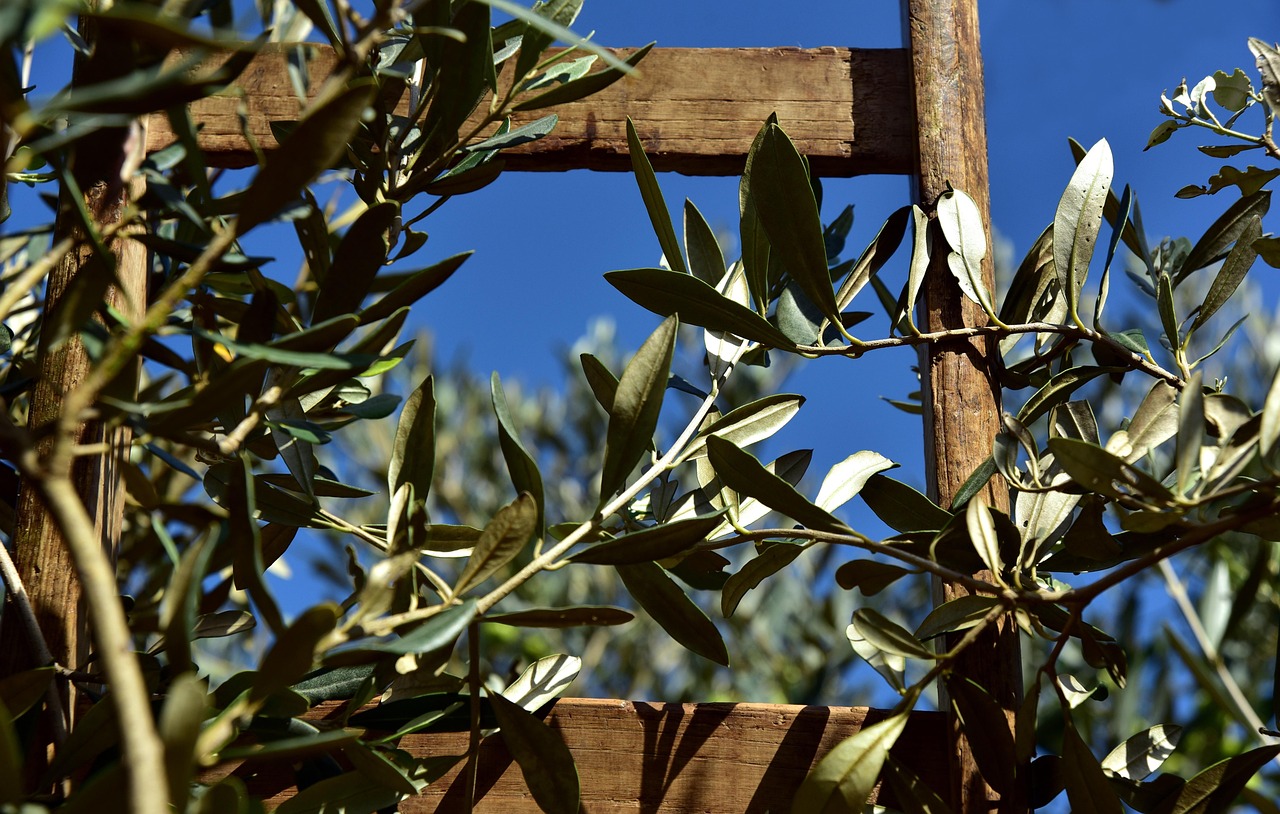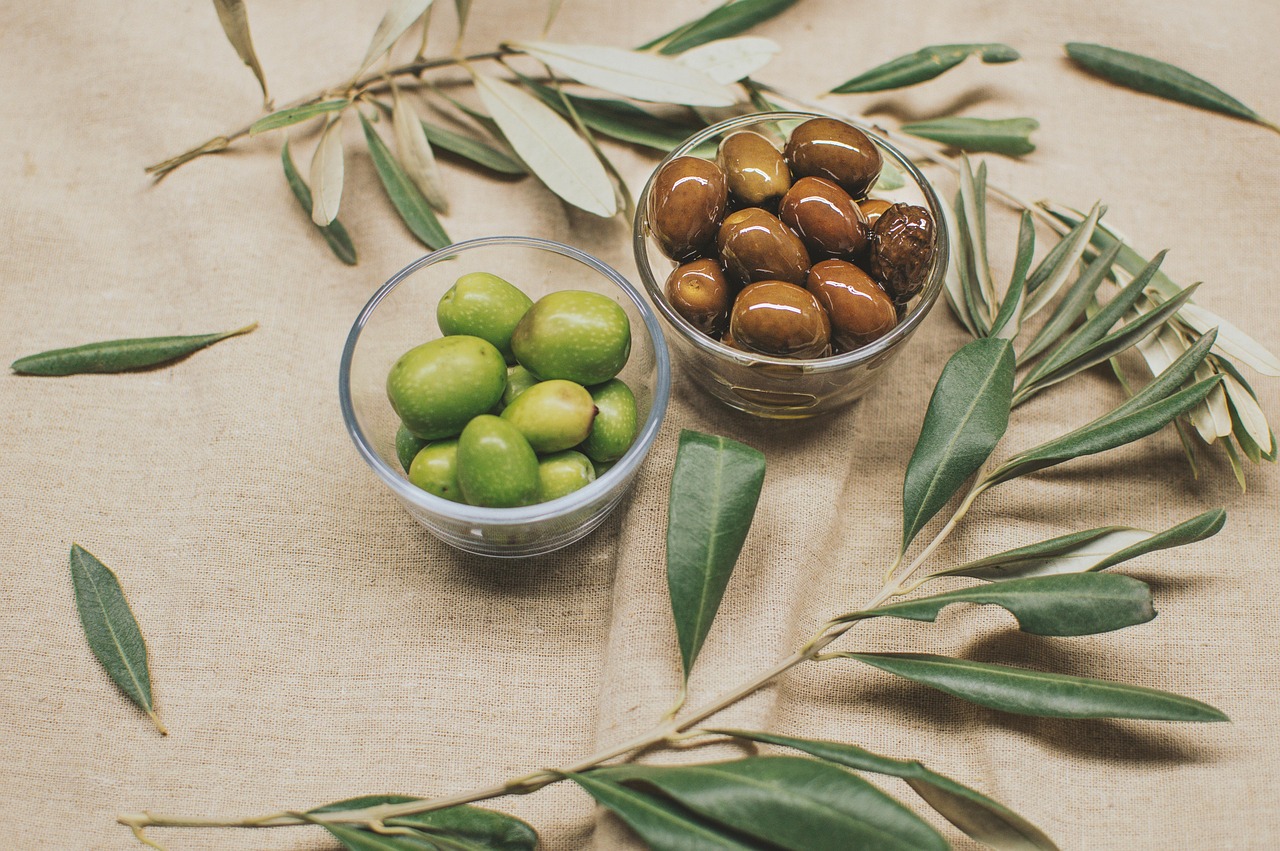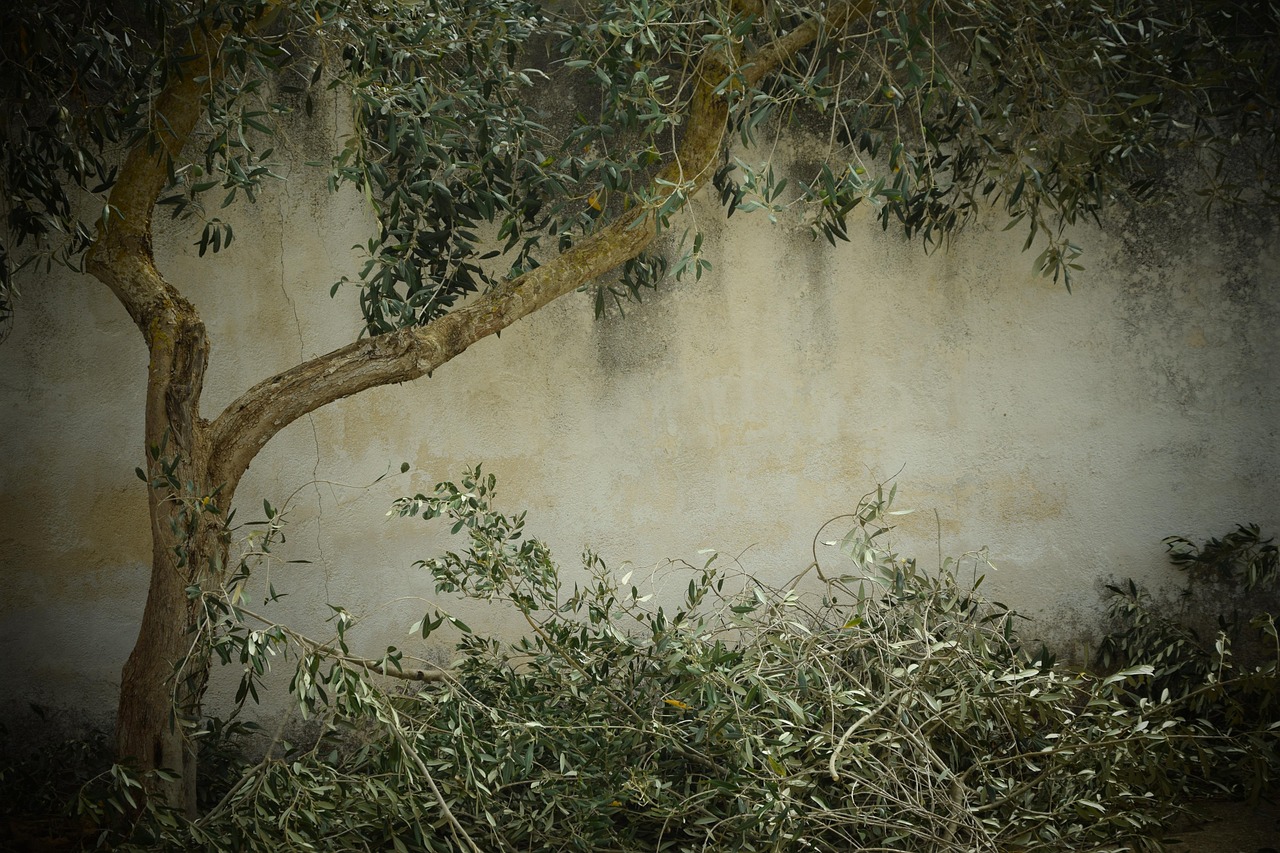Olive orchard tree pruning is essential for ensuring consistent annual harvests. Proper pruning techniques improve air circulation, enhance sunlight exposure, and promote healthy fruit production. Regular maintenance leads to stronger trees and higher-quality olives.
Understanding Olive Tree Pruning
Olive trees are cultivated for their fruit, which is a major source of olive oil and table olives. Pruning is a critical practice in olive orchard management that directly impacts the quality and quantity of the olive harvest. The primary aim of pruning is to shape the tree, remove dead or diseased branches, and encourage new growth.

Pruning not only enhances the aesthetic appearance of the orchard but also contributes significantly to the health of the trees. It helps in managing the tree size, making it easier to harvest olives. Additionally, effective pruning techniques lead to better air circulation around the foliage and improved sunlight penetration, both of which are essential for optimal fruit ripening.
Benefits of Pruning Olive Trees
There are several benefits associated with pruning olive trees, which include:
- Increased Yield: Pruning promotes better fruit set and increases overall productivity.
- Improved Tree Health: Removing dead or diseased wood reduces the risk of infections and pests.
- Enhanced Quality: Well-pruned trees produce higher quality olives with better flavor profiles.
- Ease of Harvesting: A well-shaped tree allows for easier access during harvest time.
- Longevity: Regular pruning can extend the productive life of an olive tree.
Optimal Pruning Techniques
To achieve the best results from pruning, it is important to follow optimal techniques. These include:

Timing
The timing of pruning olive trees is crucial. Generally, the best time to prune is during the late winter or early spring before new growth begins. This timing allows the tree to heal before the growing season.
Types of Pruning
There are several types of pruning methods suited for olive trees:
- Thinning: This involves removing selected branches to improve light penetration and air circulation. It helps in reducing overcrowding within the canopy.
- Heading Back: This method shortens branches to encourage bushier growth. It stimulates lateral buds to produce more shoots.
- Crown Reduction: Reducing the height of the tree helps in maintaining an appropriate size for easy harvesting while promoting fruiting on lower branches.
Tools for Pruning Olive Trees
The right tools can make a significant difference in the effectiveness of pruning. Essential tools include:

- Pruning Shears: Ideal for cutting small branches and stems with precision.
- Loppers: Useful for thicker branches that require more leverage to cut through.
- Saws: For larger branches, a hand saw or power saw may be necessary.
- Gloves: Protect hands from cuts and injuries while pruning.
Common Mistakes to Avoid
While pruning is beneficial, several common mistakes can hinder its effectiveness. Avoid the following:
- Over-pruning: Removing too many branches can stress the tree and reduce its productivity.
- Poor Timing: Pruning at the wrong time can damage emerging buds and reduce fruit yield.
- Neglecting Tree Shape: Failing to maintain a balanced shape can lead to issues with light exposure and air circulation.
Conclusion
The art of pruning olive trees requires knowledge, skill, and attention to detail. By understanding the benefits and techniques involved, orchard owners can ensure their trees remain healthy and productive. Regular maintenance through proper pruning practices leads to consistent annual harvests, thereby enhancing the overall success of an olive orchard.
Seasonal Pruning Strategies
Understanding the seasonal changes and their effects on olive trees is vital for effective pruning. Different seasons present unique opportunities and challenges for orchard management. An effective pruning strategy should align with the growth cycle of the trees to maximize yield.

Winter Pruning
Winter pruning is a crucial practice that prepares olive trees for the growing season. It typically occurs from late December to early February when the trees are dormant. This timing minimizes stress and allows for quicker recovery as new growth begins in spring.
- Goals: The main objectives during winter pruning are to remove dead or diseased wood, thin out crowded branches, and shape the tree.
- Benefits: Dormant pruning encourages robust growth and enhances light penetration, leading to better fruit production.
- Technique: Focus on cutting back older branches while maintaining a balanced structure.
Spring Pruning
Spring is a time of new growth and vitality for olive trees. While major pruning is generally completed in winter, light maintenance can be beneficial in spring.
- Goals: Remove any new growth that is weak or poorly positioned.
- Benefits: This practice helps redirect energy to stronger branches, promoting healthier olives.
- Technique: Use sharp tools to make clean cuts, ensuring minimal damage to surrounding tissues.
Understanding the Olive Tree Growth Cycle
To effectively prune olive trees, it is essential to understand their growth cycle. Olive trees undergo various stages that influence their health and productivity.
| Growth Stage | Description | Pruning Focus |
|---|---|---|
| Dormant | The tree is not actively growing, usually in winter. | Remove dead or diseased wood |
| Bud Break | New buds begin to swell and open in early spring. | Light maintenance pruning |
| Active Growth | The tree produces leaves and flowers throughout spring and summer. | Avoid major pruning; focus on monitoring health |
| Fruit Development | Fruits begin to form and mature during late summer. | Avoid pruning to prevent shock during fruiting |
| Harvest | The harvest season occurs in late summer to early fall. | No pruning; focus on harvesting techniques |
Special Considerations for Different Olive Varieties
Not all olive trees are the same. Different varieties may require tailored pruning strategies based on their growth habits and fruiting characteristics.
High-Yielding Varieties
Certain olive varieties, such as Arbequina and Koroneiki, are known for high yields and may require more aggressive pruning techniques to maintain productivity.
- Focus: These varieties benefit from regular thinning and shaping to promote airflow and sunlight exposure.
- Technique: Emphasize cutting back older wood while encouraging younger shoots to develop.
Traditional Varieties
Traditional varieties like Manzanilla may have different pruning needs. These trees often have a more open canopy and can handle less intensive pruning.
- Focus: Maintain the tree’s natural shape while removing only necessary dead or diseased branches.
- Technique: Light heading back can stimulate growth without stressing the tree excessively.
Pest Management and Pruning
Pest management is another critical aspect of maintaining healthy olive orchards. Proper pruning can help mitigate pest issues by improving tree health and reducing hiding spots for pests.
- Pest Identification: Regularly inspect trees for signs of pest damage or disease.
- Pruning Benefits: Pruning allows for better visibility, making it easier to spot issues early on.
- Cultural Practices: Combine pruning with other cultural practices such as soil management and irrigation to enhance tree resilience against pests.
By integrating these strategies into your olive orchard management plan, you will foster a productive environment that yields consistent annual harvests. Understanding seasonal changes, tree growth cycles, and variety-specific needs will enable you to optimize your pruning efforts effectively.
Post-Pruning Care for Olive Trees
After pruning, proper care is essential to ensure that olive trees recover effectively and continue to thrive. This section discusses the best practices for post-pruning care, including irrigation, fertilization, and monitoring tree health.
Irrigation Practices
Irrigation plays a critical role in helping olive trees recover after pruning. Adequate moisture is necessary for promoting new growth and ensuring the overall health of the tree.
- Watering Schedule: Maintain a consistent watering schedule, especially during the growing season. Trees may require more water following pruning.
- Soil Moisture: Regularly check the soil moisture level. It should be moist but not waterlogged. Overwatering can lead to root rot.
- Drip Irrigation: Consider using drip irrigation systems to provide consistent moisture directly to the root zone while minimizing water loss through evaporation.
Fertilization After Pruning
Fertilization is another important aspect of post-pruning care. Providing the right nutrients can help olive trees recover more quickly and produce higher-quality fruit.
- Nutrient Requirements: Olive trees benefit from a balanced fertilizer that includes nitrogen, phosphorus, and potassium. Micronutrients such as calcium, magnesium, and iron may also be beneficial.
- Timing: Fertilize shortly after pruning to support new growth. This timing ensures that the tree has the nutrients it needs during its active growth period.
- Application Method: Apply fertilizer evenly around the base of the tree, avoiding direct contact with the trunk to prevent burn damage.
Monitoring Tree Health
Regular monitoring of tree health is essential to catch any potential issues early on. This proactive approach can help maintain productivity and overall tree vitality.
Visual Inspections
Performing regular visual inspections allows orchard managers to identify problems before they escalate.
- Signs of Stress: Look for signs of wilting, discoloration, or abnormal growth patterns that may indicate stress or disease.
- Pest Infestations: Check for visible pests or signs of pest damage, such as holes in leaves or webbing on branches.
- Disease Symptoms: Monitor for any signs of disease, including leaf drop, fungal growth, or unusual spots on leaves.
Soil Testing
Soil health directly influences tree performance. Conducting soil tests can provide valuable information about nutrient levels and pH balance.
- Nutrient Analysis: Test for essential nutrients such as nitrogen, phosphorus, potassium, and micronutrients to determine fertilization needs.
- pH Levels: Ensure that soil pH is within the optimal range for olive trees (typically 6.0 to 8.5). Adjustments may be necessary based on soil test results.
- Soil Amendments: Based on test results, consider adding lime to raise pH or sulfur to lower it, along with organic matter to improve soil structure.
Common Diseases Affecting Olive Trees
Olive trees are susceptible to several diseases that can affect their health and productivity. Understanding these diseases can help in early detection and management.
Olive Knot
This bacterial disease causes galls or knots on branches and stems, which can weaken the tree and affect fruit production.
- Symptoms: Visible knots on branches and stunted growth.
- Management: Remove infected branches and apply appropriate bactericides as needed.
Verticillium Wilt
This fungal disease affects the vascular system of the tree, leading to wilting and eventual death if left untreated.
- Symptoms: Yellowing leaves and branch dieback.
- Management: Improve soil drainage and avoid overwatering. Infected trees may need to be removed to prevent spreading.
Leaf Spot
Leaf spot diseases can lead to premature leaf drop and reduced photosynthesis, impacting overall tree health.
- Symptoms: Dark spots on leaves that may expand over time.
- Management: Improve air circulation through pruning and apply fungicides if necessary.
The Role of Mulching in Orchard Maintenance
Mulching around olive trees can provide numerous benefits that contribute to their health and productivity. Mulch helps retain soil moisture, suppress weeds, and improve soil structure over time.
- Types of Mulch: Organic mulches such as wood chips, straw, or grass clippings are ideal. They decompose slowly, enriching the soil as they break down.
- Application Rate: Apply a layer of mulch about 3 to 4 inches thick around the base of the tree, keeping it away from the trunk to prevent rot.
- Benefits: Mulch helps maintain consistent soil moisture levels and reduces competition from weeds, allowing olive trees to thrive.
By implementing these post-pruning care practices, olive orchard owners can significantly enhance the vitality of their trees. This attentive approach fosters strong growth, resilience against diseases, and ultimately leads to consistent annual harvests.
Additional Resources for Olive Orchard Management
For those looking to enhance their knowledge of olive orchard management and pruning techniques, several resources can provide valuable information. These include books, online courses, and agricultural extension services that offer expert advice and practical insights.
Books and Publications
Books dedicated to olive cultivation can provide in-depth knowledge, covering everything from basic care to advanced pruning techniques. Recommended titles include:
- The Olive Tree: History, Culture, and Products – This book covers the history and cultural significance of olive trees, along with practical cultivation tips.
- Olive Production Manual – A comprehensive guide that includes detailed information on pruning, pest management, and harvesting techniques.
- Growing Olives: The Complete Guide – Offers insights into growing various olive varieties and tips for maintaining a productive orchard.
Online Courses and Webinars
Many agricultural organizations and universities offer online courses and webinars focused on olive cultivation. These can be excellent resources for visual learning and gaining practical skills.
- University Extension Programs: Many universities have agricultural extension services that provide online resources and workshops on olive tree care.
- Webinars by Agricultural Experts: Look for webinars hosted by olive industry experts that cover current practices and innovations in olive farming.
Local Agricultural Associations
Joining local agricultural associations or olive growers’ clubs can be beneficial for networking and gaining firsthand experience.
- Networking Opportunities: Connect with other growers to share experiences, challenges, and solutions.
- Workshops: Attend hands-on workshops that focus on pruning, pest management, and other aspects of olive farming.
Technology in Olive Orchard Management
The advent of technology has revolutionized agriculture, including olive orchard management. Various tools and technologies can help streamline processes, increase efficiency, and improve productivity.
Drones for Monitoring
Drones equipped with cameras can be used to survey olive orchards effectively. They provide aerial imagery that helps identify areas needing attention.
- Benefits: Drones can quickly cover extensive areas, allowing for timely identification of issues like pest infestations or nutrient deficiencies.
- Data Collection: Drones can gather data on plant health, which can be analyzed to make informed management decisions.
Irrigation Technology
Smart irrigation systems are increasingly being adopted in olive orchards. These systems use sensors to monitor soil moisture levels and automate watering schedules based on real-time data.
- Efficiency: Automated systems reduce water waste and ensure that trees receive the right amount of moisture.
- Sustainability: Efficient irrigation practices contribute to sustainable farming by conserving water resources.
Mobile Applications
Mobile applications designed for farmers can assist in tracking orchard conditions, scheduling maintenance tasks, and managing pest control efforts.
- Task Management: Apps can help schedule pruning, irrigation, and fertilization tasks based on best practices and local climate conditions.
- Pest Alerts: Some applications provide alerts for pest outbreaks based on local reports and weather conditions.
Final Thoughts
The journey of cultivating a successful olive orchard requires dedication, knowledge, and a commitment to best practices in tree care. Pruning is a fundamental aspect that significantly influences the health of the trees and the quality of the harvest. By understanding the growth cycles, implementing effective pruning techniques, and providing post-pruning care, orchard owners can ensure robust trees that yield consistently high-quality olives year after year.
As technology continues to evolve, incorporating modern tools into traditional practices will further enhance productivity and sustainability in olive farming. Whether you are a seasoned grower or just starting your journey in olive cultivation, the insights provided in this article will help you navigate the complexities of orchard management with confidence.
Ultimately, the combination of skilled pruning, attentive care, and ongoing education will lead to fruitful harvests and a thriving olive orchard. By embracing both traditional wisdom and modern advancements, growers can achieve lasting success in their olive farming endeavors.
